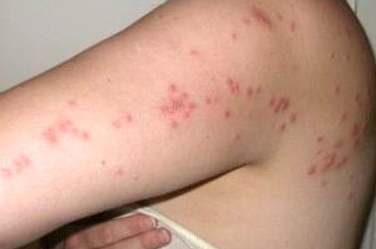Papular urticaria is a common skin condition, especially in children, caused by a hypersensitivity reaction to insect bites, such as mosquito, flea, bedbug. It is characterized by chronic or recurrent papules. ICD-10 code - L50.8. ICD-11 code - EK50.00.
Papular urticaria is most common in children between the ages of 6 months and 5 years, with a higher prevalence in girls. It is rare in adults, but more common in farmers, bakers, dockworkers, and packers. The prevalence of the disease ranges from 2.3% to 6.7% among pediatric dermatology patients and varies by region, country of residence, and socioeconomic status. Seasonal patterns of the disease have been noted, with higher incidence in spring and summer.
Papular urticaria is thought to result from a hypersensitivity reaction to insect bites, including those from mosquitoes, fleas, ticks, bed bugs, caterpillars, and moths. Some authors suggest that papular urticaria is more common in children with an atopic eczema. One study has shown that the presence of pets and the use of colognes are predisposing factors for the development of the disease.The disease is characterized by the development of pruritic, firm, pinkish-red papules, often with an erythematous edematous base, 2-8 mm in diameter, often with a central hemorrhagic dot. The rash elements tend to cluster and are located primarily on the exposed areas of the extensor surfaces of the limbs, less commonly on the trunk and face. In addition to papules, erythematous macules, papulovesicles, vesicles and excoriations may be seen.
Scratching may cause erosion, ulceration, and crusting. Secondary infection is common.
The eruptions usually resolve within a few days, but in some cases they may persist for several weeks to months and often recur each year. Pigmented post-inflammatory spots may remain after the papules have cleared.- Impetigo
- Prurigo
- Exanthematous drug eruption
- Gianotti-Crosti syndrome
- Pityriasis lichenoides et varioliformis acuta (PLEVA)
- Dermatitis herpetiformis
- Pityriasis lichenoides chronica (PLC)

